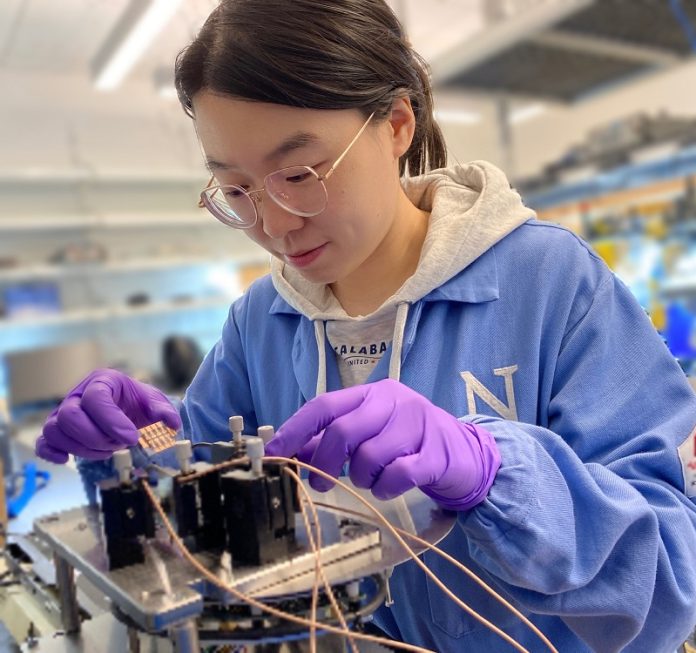
Northwestern University researchers have made a breakthrough in solar energy technology by creating a special protective coating that dramatically increases the lifespan of perovskite solar cells.
This development could make these high-efficiency, low-cost solar cells more practical for everyday use.
Perovskite solar cells are known for being more efficient and cheaper than traditional silicon-based solar cells.
However, they have a big downside: they don’t last long when exposed to real-world conditions like heat and moisture.
Most perovskite solar cells rely on ammonium-based coatings to boost efficiency, but these coatings break down quickly under stress.
The research team, led by Northwestern scientists Bin Chen, Mercouri Kanatzidis, and Ted Sargent, developed a new type of coating made from amidinium, a more stable material.
Compared to the usual ammonium-based coatings, amidinium is 10 times more resistant to damage and keeps the solar cells working much longer.
In tests, solar cells with the amidinium coating lasted three times longer than before. These cells retained 90% of their original efficiency even after 1,100 hours of harsh testing conditions, such as extreme heat and light.
“Most efforts to improve perovskite solar cells have focused on making the perovskite material more stable,” Chen explained.
“We decided to tackle the problem from another angle by improving the protective layer, which led to much better overall performance.”
The secret lies in a process called amidination, which replaces the unstable ammonium in the coating with a more durable amidinium molecule. Amidinium molecules have a unique structure that spreads out electrons evenly, making them stronger against heat and other stresses.
Yi Yang, a postdoctoral researcher and the study’s first author, explained: “Ammonium layers break down under heat. We converted ammonium into amidinium, which stays stable even in tough conditions.”
This innovation ensures the solar cells don’t degrade quickly, a key improvement for practical use.
Thanks to this new coating, the researchers achieved a remarkable efficiency of 26.3%—meaning the solar cells converted 26.3% of sunlight into electricity. This is one of the highest efficiency levels ever recorded for perovskite solar cells.
In addition, the amidinium-coated solar cells had a T90 lifetime (time taken for efficiency to drop by 90%) three times longer than conventional versions.
This breakthrough builds on earlier successes from Sargent’s lab, which has been pushing the boundaries of perovskite solar cell technology. In recent years, the team has set records for energy efficiency and introduced innovations to improve the stability and structure of perovskite cells.
While silicon remains the most popular material for solar cells, it is expensive and nearing its maximum efficiency potential. Perovskite offers a cheaper and more efficient alternative, but its lack of durability has been a barrier to widespread adoption.
“This work addresses the biggest challenge for perovskite solar cells: stability in real-world conditions,” Kanatzidis said. “Our new coating brings us closer to making these cells a practical, affordable replacement for silicon-based solar panels.”
The research also supports Northwestern’s efforts to decarbonize energy systems. As part of their mission, scientists at the university are developing next-generation solar materials to make renewable energy more efficient and accessible.
With this new coating, perovskite solar cells are one step closer to becoming a game-changing solution for clean energy.
This study was published in Science.



